Offering both protection and power, garrisons in the Bible serve as pivotal symbols in ancient narratives, unveiling a deeper…
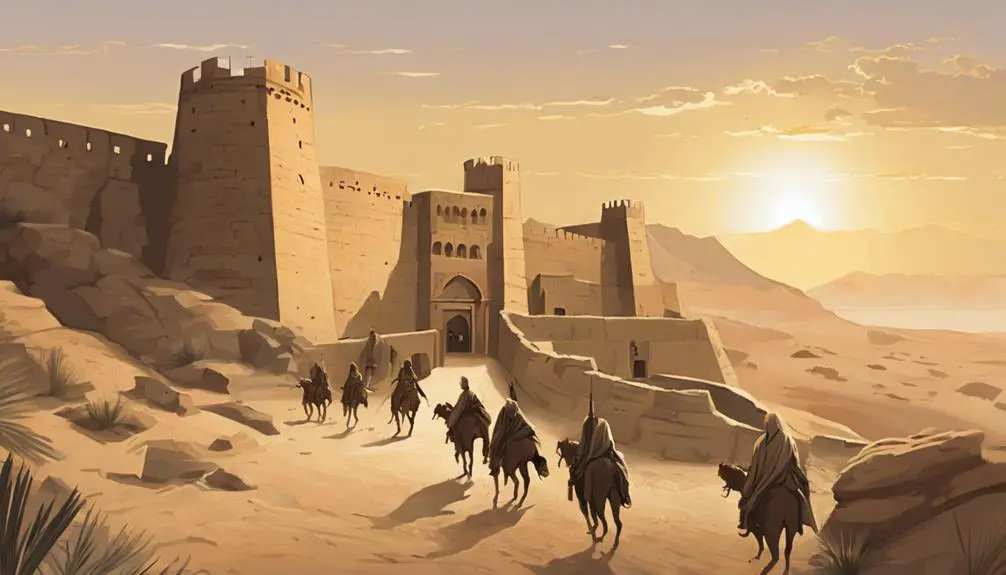
What Are Garrisons in the Bible
In the ancient world, garrisons were both bastions of security and symbols of oppression, a duality that you'll find intriguingly reflected in biblical narratives. As you explore the historical and spiritual landscapes of the Bible, you'll discover that garrisons weren't just military installations; they were pivotal in shaping the socio-political and theological contours of ancient Israel and its neighbors.
From their strategic military roles to their symbolic interpretations, understanding garrisons opens up a nuanced perspective on biblical stories. Let's peel back the layers of history and symbolism to uncover how these fortifications influence key biblical events and what they might mean in a broader spiritual context.
Key Takeaways
- Garrisons in the Bible are fortified military establishments crucial for defense and control.
- They symbolize power, influence, and the complexities of leadership within ancient societies.
- Biblical references to garrisons offer insights into historical, economic, and social impacts on ancient civilizations.
- Garrisons carry symbolic meanings, representing spiritual strongholds and divine intervention in biblical narratives.
Definition and Origins
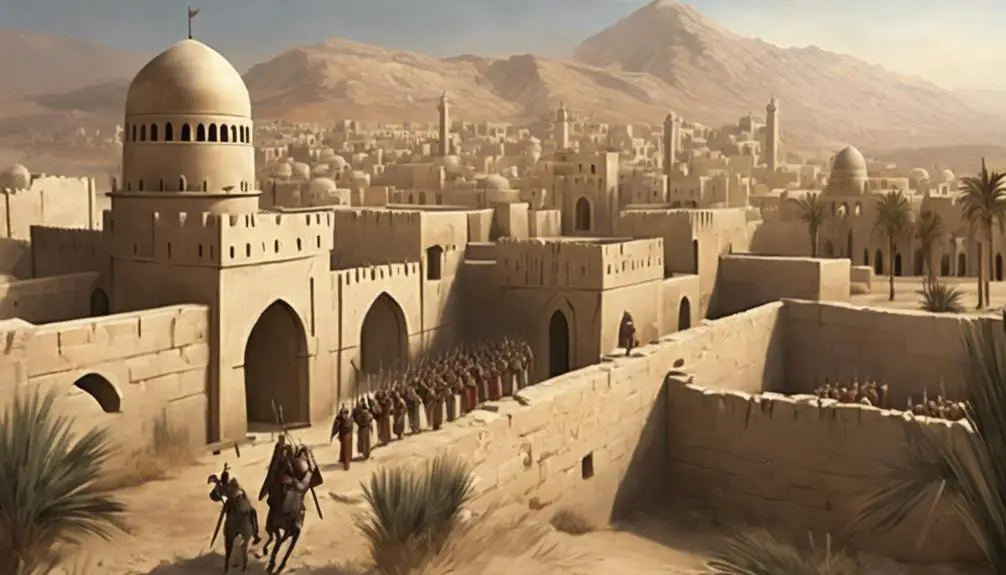
Garrisons, often mentioned throughout the Bible, refer to military establishments or fortified settlements, originating in ancient times as strategic measures for defense and control. You'll find that their presence underscores not just the military strategies of the era but also provides insight into the socio-political landscape. Garrison architecture, with its robust and strategic designs, serves as a testament to the ingenuity and resourcefulness of ancient civilizations.
Delving deeper, you'll notice that cultural influences played a pivotal role in shaping the architecture and functionality of these garrisons. They weren't simply military outposts; they were melting pots of cultural exchange and adaptation. The design elements borrowed from neighboring cultures, the adaptation of foreign construction techniques, and the integration of local customs into the daily lives of the garrison's inhabitants illustrate a blending of cultures that mightn't have occurred in a more isolated setting.
The construction and operation of garrisons required a deep understanding of both the physical and human landscapes. This understanding was vital for choosing locations that offered natural defenses, as well as for designing structures that could withstand sieges. The incorporation of advanced engineering techniques and the adoption of cultural practices from conquered or allied peoples reflect a level of sophistication and pragmatism.
Historical Significance
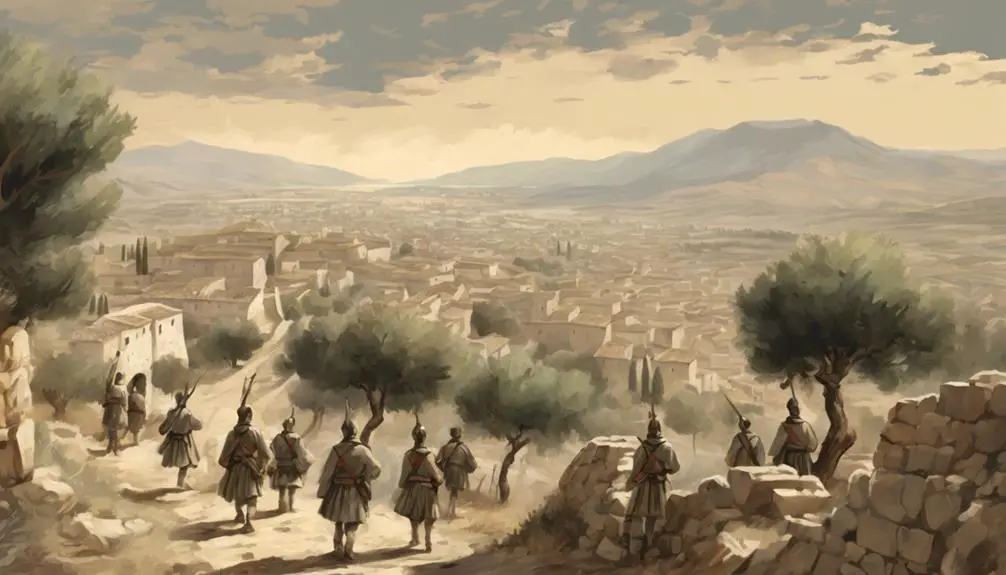
Understanding the historical significance of these military establishments reveals their immense impact on the shaping of ancient societies and territories. Garrisons weren't just military outposts; they were focal points where cultures intersected, and architectural styles evolved, reflecting a blend of necessity and influence from conquered peoples. You'd find that these structures weren't merely functional; they were symbols of power and control, embedded within the very fabric of the societies they dominated.
The cultural impact of garrisons extended far beyond their walls. They were hubs of economic activity, bringing together traders, artisans, and local populations in ways that significantly altered the social landscape. The presence of a garrison could lead to the assimilation of foreign elements into local cultures, introducing new technologies, religious practices, and even languages. This melting pot effect contributed to the rich tapestry of ancient civilizations, fostering a level of diversity and interconnectedness that mightn't have been possible otherwise.
Moreover, the architectural styles of these garrisons often set a precedent for civilian structures, influencing the design of public buildings, fortifications, and even residential areas. Their construction techniques and materials spread throughout regions, showcasing the ingenuity and adaptability of ancient engineers and architects. This exchange of knowledge and styles helped to advance architectural development across different cultures and epochs, leaving a lasting legacy that extends far beyond their original military purpose.
In essence, the historical significance of garrisons in the Bible and beyond lies not just in their role as protectors of territories, but in their profound influence on the cultural and architectural evolution of ancient societies.
Strategic Military Roles
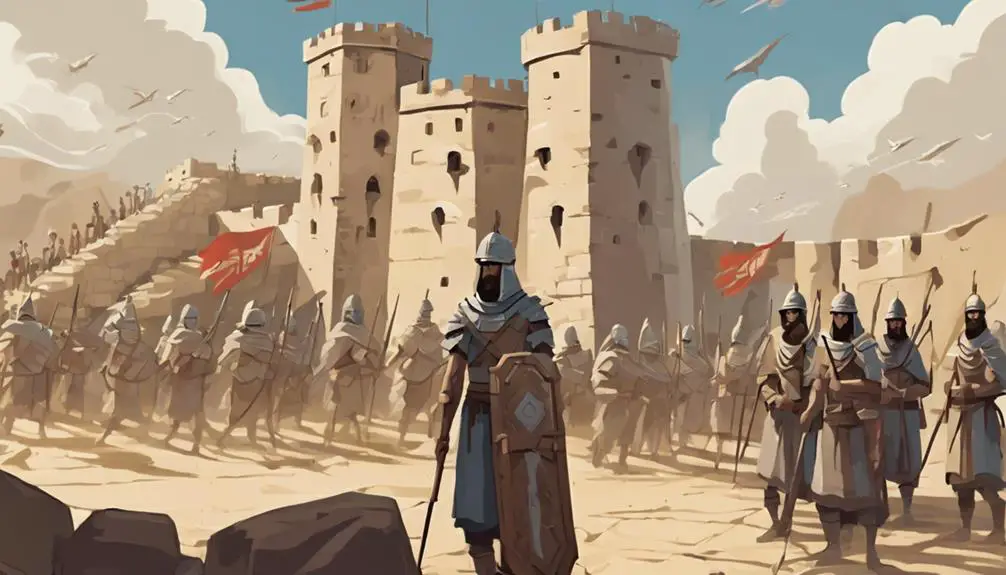
In the realm of ancient warfare, garrisons played a critical role in securing territories and establishing military dominance. These fortified positions weren't just about the physical presence of troops; they were a complex combination of strategic positioning, fortification techniques, and leadership dynamics.
You see, the choice of where to establish a garrison was never random. It was a calculated decision that considered the most vulnerable points of a territory as well as the most strategic for exerting control and influence over a region.
The art of fortification has always been central to military strategy, and garrisons were no exception. Through advanced fortification techniques, these outposts were transformed into impenetrable strongholds. Walls, towers, and ditches weren't just physical barriers but psychological ones, instilling fear and respect in the hearts of adversaries. The presence of a well-fortified garrison could deter enemy forces, sometimes without a single arrow being shot.
Leadership dynamics within a garrison were equally crucial. The commander of a garrison held immense responsibility, not only in terms of military might but also in maintaining morale, ensuring discipline, and managing resources. This leader had to be both a skilled warrior and a wise manager, capable of making quick decisions in the heat of battle and during the calm of peace.
In essence, garrisons were more than just military outposts; they were the backbone of ancient warfare, embodying the strategic, technical, and human elements that are essential for victory. Their roles were multifaceted, serving not only as centers of military power but also as symbols of authority and control.
Biblical References Explained

Several passages throughout the Bible highlight the strategic importance of garrisons, demonstrating their role in both defense and the assertion of power. These fortified positions weren't merely military installations but also markers of territorial control and symbols of strength. They offer a fascinating glimpse into the ancient world's tactics and the broader cultural impact of military structures on societies.
- Archaeological Evidence: Discoveries in the Middle East have provided tangible proof of the existence of these garrisons. Excavations reveal the remnants of fortifications that align with biblical descriptions, offering a window into the past that corroborates scriptural accounts. These findings not only validate historical narratives but also shed light on the engineering prowess and strategic thinking of ancient civilizations.
- Cultural Impact: Garrisons did more than protect; they influenced the daily lives of surrounding communities. They were centers of power that affected local economies, trade routes, and even the social hierarchy. The presence of a garrison could elevate the status of a town or region, making it a focal point in the landscape of political and military maneuvers.
- Biblical Narratives: The stories and accounts involving garrisons in the Bible aren't just historical records; they're narratives that offer insights into the challenges and triumphs of leadership, the complexities of conquest, and the perpetual quest for security and stability. These tales reflect the human experience, encapsulating themes of struggle, resilience, and ambition.
Understanding the role of garrisons in the Bible enriches one's appreciation of the text's historical context and its enduring relevance. Through archaeological findings and cultural analysis, we gain a deeper understanding of the ancient world and its legacies.
Symbolic Interpretations
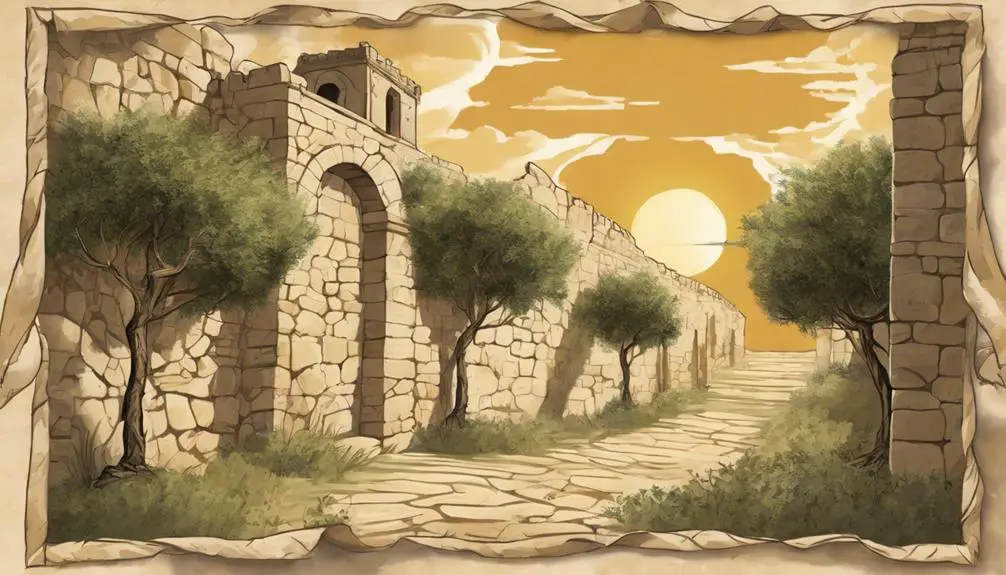
How do garrisons, beyond their physical and military significance, embody deeper symbolic meanings within biblical narratives? To understand this, you've got to dive into the layers of allegorical teachings and cultural metaphors that the Bible is rich with. Garrisons, often seen as mere military outposts, are woven into the biblical text with much more profound implications.
In the biblical context, garrisons aren't just physical defenses but also represent spiritual strongholds, challenges to faith, or even divine protection. This dual nature illustrates the complexity of interpreting ancient texts and the richness of the allegorical teachings within.
To highlight this, consider the following table which encapsulates the symbolic interpretations of garrisons in various contexts:
Biblical Context |
Symbolic Meaning |
Implication |
|---|---|---|
Military Conquest |
Divine Judgement |
Reflects God's power and will |
Protection of a City |
Divine Protection |
God's safeguarding of His people |
Occupation of Land |
Spiritual Strongholds |
Challenges to faith and morality |
Siege |
Testing of Faith |
Trials that refine and strengthen |
Liberation |
Salvation |
Deliverance through divine intervention |
This table succinctly demonstrates how garrisons can be interpreted in multiple layers, from cultural metaphors to allegorical teachings. By delving into these interpretations, you gain a richer understanding of the biblical narratives, uncovering meanings that go beyond the literal to touch the spiritual and moral dimensions. It's a journey through history, culture, and faith that reveals the depth of the biblical text and its relevance through the ages.
Frequently Asked Questions
How Did the Living Conditions Within Biblical Garrisons Compare to Those in Civilian Towns During the Same Era?
You're exploring how living conditions in biblical garrisons stacked up against those in civilian towns. Generally, garrison diets and health conditions were poorer due to limited resources and crowded living spaces.
Civilians often had better access to diverse foods and less crowded living conditions, which contributed to better overall health. However, both faced challenges unique to their times, making the comparison complex but insightful into historical lifestyles.
What Role Did Women and Children Play in the Daily Life and Operations of Biblical Garrisons?
In your exploration of historical living conditions, you'll find that women and children played crucial roles. Women's crafts weren't just hobbies; they were essential for maintaining daily life and supporting the community's economy.
Meanwhile, children's education went beyond reading and writing. It included learning survival skills and understanding their roles in society. This intricate blend of duties and learning ensured the community thrived, even in the face of external pressures.
Were There Any Notable Differences in the Construction Styles or Materials of Garrisons Across Different Biblical Regions or Periods?
Imagine ancient landscapes dotted with fortresses, each telling a tale of survival and strategy. You'd find that architectural influences and material scarcity shaped these strongholds distinctly across different regions and periods.
Analyzing them, you'd uncover a mosaic of construction styles, where local resources and cultural exchanges left their mark. This exploration reveals not just practical defenses, but a deeper understanding of the societies that built them, respecting their ingenuity and adaptability.
How Did the Presence of a Garrison Affect the Local Economy and Trade of the Surrounding Community in Biblical Times?
In biblical times, the presence of a garrison significantly influenced the local economy and trade of surrounding communities.
You'd see trade routes become safer, encouraging more frequent and diverse exchanges.
This security boost often led to agricultural impacts, as local farmers could reliably produce and trade surplus without fear of theft or destruction.
This environment nurtured economic growth, allowing communities to thrive by leveraging the protective presence of garrisons to expand trade and agriculture.
Can Any Parallels Be Drawn Between the Management or Organizational Structure of Biblical Garrisons and Modern Military Bases?
You can draw parallels between biblical garrisons and modern military bases in terms of military leadership and strategic positioning. Both serve as centers for command, where leadership decisions are made, and troops are managed.
Their locations are strategically chosen for defense and control over surrounding areas. While technology and tactics have evolved, the core principles of leadership and strategic placement remain fundamental to both ancient and contemporary military operations.
Conclusion
In your journey through the Bible, you've encountered garrisons, not just as military outposts but as symbols of strength, vigilance, and divine protection. These bastions, rooted in history, served strategic roles, shaping narratives and guiding the chosen.
Their mention isn't merely historical; it's a call to recognize the power of faith and the fortitude of spirit. As you reflect on these biblical references, let them inspire you towards resilience, courage, and a deeper understanding of divine guardianship in your own life.



Sign up